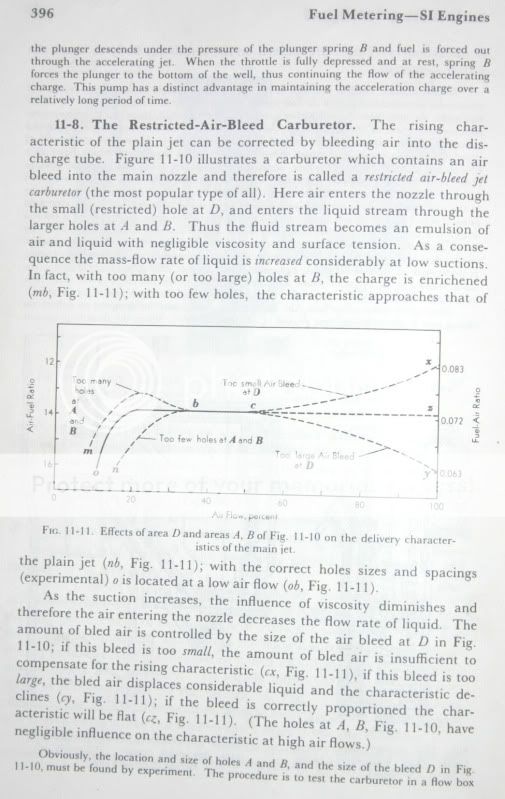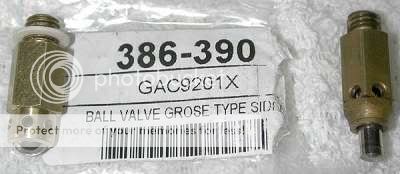I was wondering what other effect float level would have on the carby other than raising and lowering fuel to match holes on the et's,would it effect the progression or idle circuits ?
I have noticed that Geomac has posted again recently and seem to recall him saying in an earlier post that he would post a picture or diagram of his emulsion tube spacings one day,they would be really handy to compare with the information I currently have ,before I start turning my f21's into a block of swiss cheese.
I know that the 750 is over carbed with the 36 chokes ,but smaller chokes are getting hard to come by and I would like to have a good crack at sorting the tuning without swapping them .I'm running a K&N and Contis so this should help.
So heres the plan so far:
fit 60 idle jets,160-165 main jets
raise the float level to bring on earlier emulsification
Block at least one of the four 120 bleeds above float level (the 906 only has 4 x 115 and the f36 2 x 110) to bring on earlier emulsification
hopefully these mods will cover the lean hole at transition.
Try and get diagrams or pictures of others modified et's that are working
drill several more holes at a yet to be determined diameter and height below float level.
It all sounds easy but I've no doubt that I'll be tearing my hair out before I finish.
Any help would be appreciated.
PS. I don't consider 'throw the weber in the bin' to be helpful


